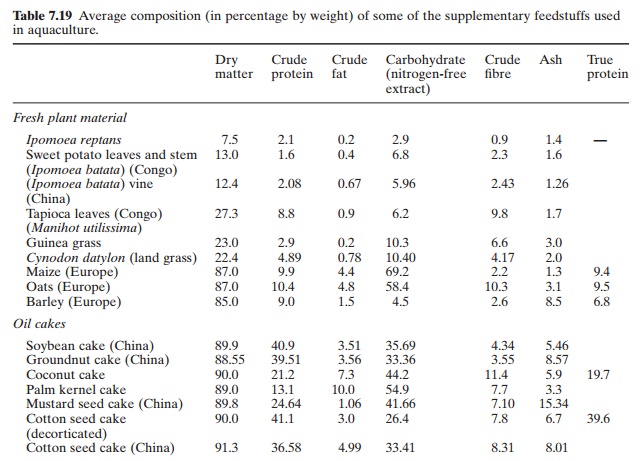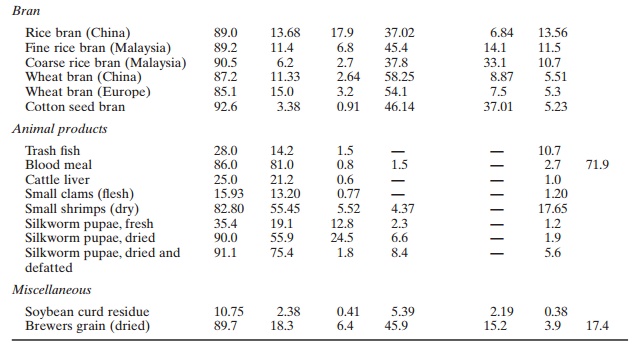Chapter: Aquaculture Principles and Practices: Nutrition and Feeds
Supplementary feedstuffs - Aquaculture: Artificial feeds
Artificial feeds
Supplementary feedstuffs
Different types of feedstuffs have been used in traditional aquaculture, ranging from kitchen wastes and foliage in homestead-type fish farming to fishery and agroindustrial by-products like oil cakes, wheat and rice bran, mill wastes, brewery waste, bean residues, silkworm pupae, poultry wastes, slaughterhouse wastes (blood and entrails), trash fish and fish offal. Table 7.19 gives the composition of some of the commonly used supplementary feeds. It is, however, quite obvious that any precise determination of the supplementary feeding rates is difficult, because of the variability of natural food production in the farm and indeed also the variation in nutrient levels in the supplemen-tary feedstuffs.


The feedstuffs are often provided as mixtures in order to improve the quantity and food conversion ratios. Hickling (1962) gives the food conversion (the amount of feed required to produce a unit of weight gain) of a number of such supplementary diets as follows:
Martyshev (1983) gives several combinations of feedstuffs used in the former USSR for feeding carp. In the preparation of feed mixtures, animal products are generally mixed with products of plant origin. In addition to higher aquatic and terrestrial plants, fresh or dried algae (such as Chlorella) are added to improve the protein and trace element content, as well as to serve as a binder for the mixture.
Besides the feedstuffs referred to above, processed compound feeds are also used in aquaculture to supplement natural food produced in ponds or other enclosed waters. In such cases, the formulations are generally aimed at providing additional protein and fat. Feeding costs often amount to 40–60 per cent of the overall cost of production in most forms of intensive aquaculture when complete feeds are used. The supplementation of natural food with less expensive supplementary feeds (as feedstuffs or prepared feeds), is meant to reduce this major cost. However, based on studies of common carp feeding, Hepher and Pruginin (1981) pointed out the difficulties in deciding on the composition of supplementary feeds in ponds with different natural productivities and standing crops of fish. It is obvious that, in practice, it will be almost impossible to have separate supplementary diets for every stage of the constantly changing standing crop condition. Approximate composition and quantity of feeds have to be used, based on experience or field trials.
Related Topics